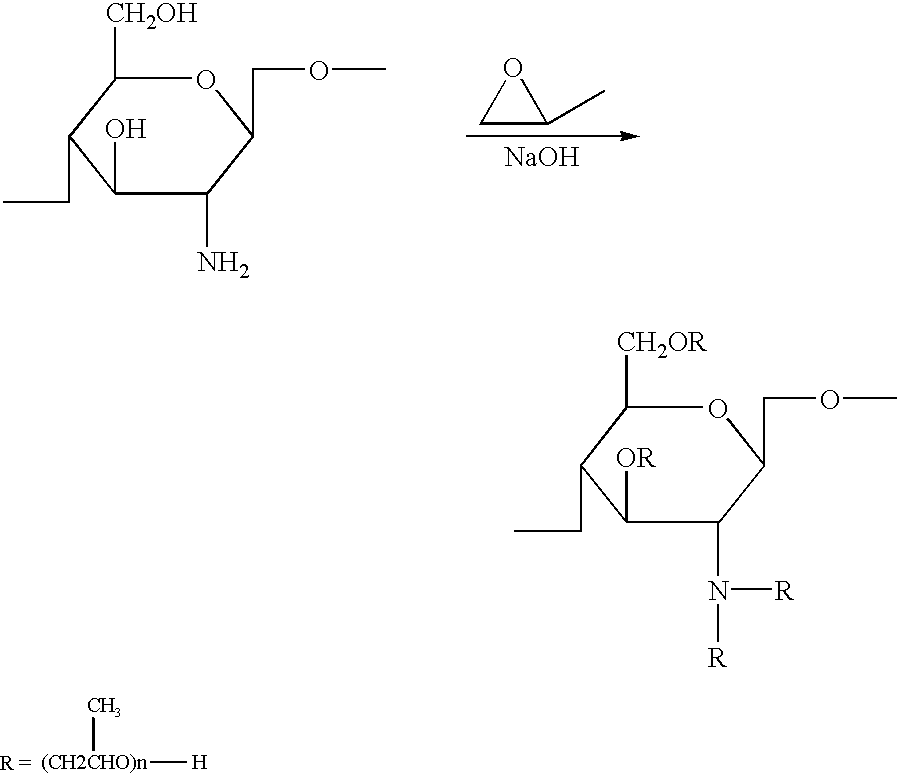Chitosan derivatives combined with polypropylene glycol and method for preparing the same
a technology of chitosan and polypropylene glycol, which is applied in the field of chitosan derivatives, can solve the problems of difficult solution, incompatibility of chitosan with various effective gradients of cosmetics, and the report on the chitosan derivative used for stabilizer and moisturizer in cosmetics
- Summary
- Abstract
- Description
- Claims
- Application Information
AI Technical Summary
Benefits of technology
Problems solved by technology
Method used
Image
Examples
example 1
Chitin obtained from shrimps and crabs was deacetylated by 50% with concentrated sodium hydroxide to produce chitosan having a molecular weight of 500,000. The chitosan thus obtained was reacted with propylene oxide in the presence of sodium hydroxide at 70.degree. C. and under the pressure of 4.5 Kg / cm.sup.2 for 10 hours to yield the polypropylene glycol chitosan of the present invention.
example 2
Chitin obtained from shrimps and crabs was deacetylated by 60% with concentrated sodium hydroxide to produce chitosan having a molecular weight of 500,000. The chitosan thus obtained was reacted with propylene oxide in the presence of potassium hydroxide at 75.degree. C. and under the pressure of 4.3 Kg / cm.sup.2 for 9 hours to yield the polypropylene glycol chitosan of the present invention.
example 3
Chitin obtained from shrimps and crabs was deacetylated by 70% with concentrated sodium hydroxide to produce chitosan having a molecular weight of 600,000. The chitosan thus obtained was reacted with propylene oxide in the presence of lithium hydroxide at 70.degree. C. and under the pressure of 4.0 Kg / cm.sup.2 for 12 hours to yield the polypropylene glycol chitosan of the present invention.
PUM
| Property | Measurement | Unit |
|---|---|---|
| reaction temperature | aaaaa | aaaaa |
| solubility | aaaaa | aaaaa |
| temperature | aaaaa | aaaaa |
Abstract
Description
Claims
Application Information
 Login to View More
Login to View More - R&D
- Intellectual Property
- Life Sciences
- Materials
- Tech Scout
- Unparalleled Data Quality
- Higher Quality Content
- 60% Fewer Hallucinations
Browse by: Latest US Patents, China's latest patents, Technical Efficacy Thesaurus, Application Domain, Technology Topic, Popular Technical Reports.
© 2025 PatSnap. All rights reserved.Legal|Privacy policy|Modern Slavery Act Transparency Statement|Sitemap|About US| Contact US: help@patsnap.com



